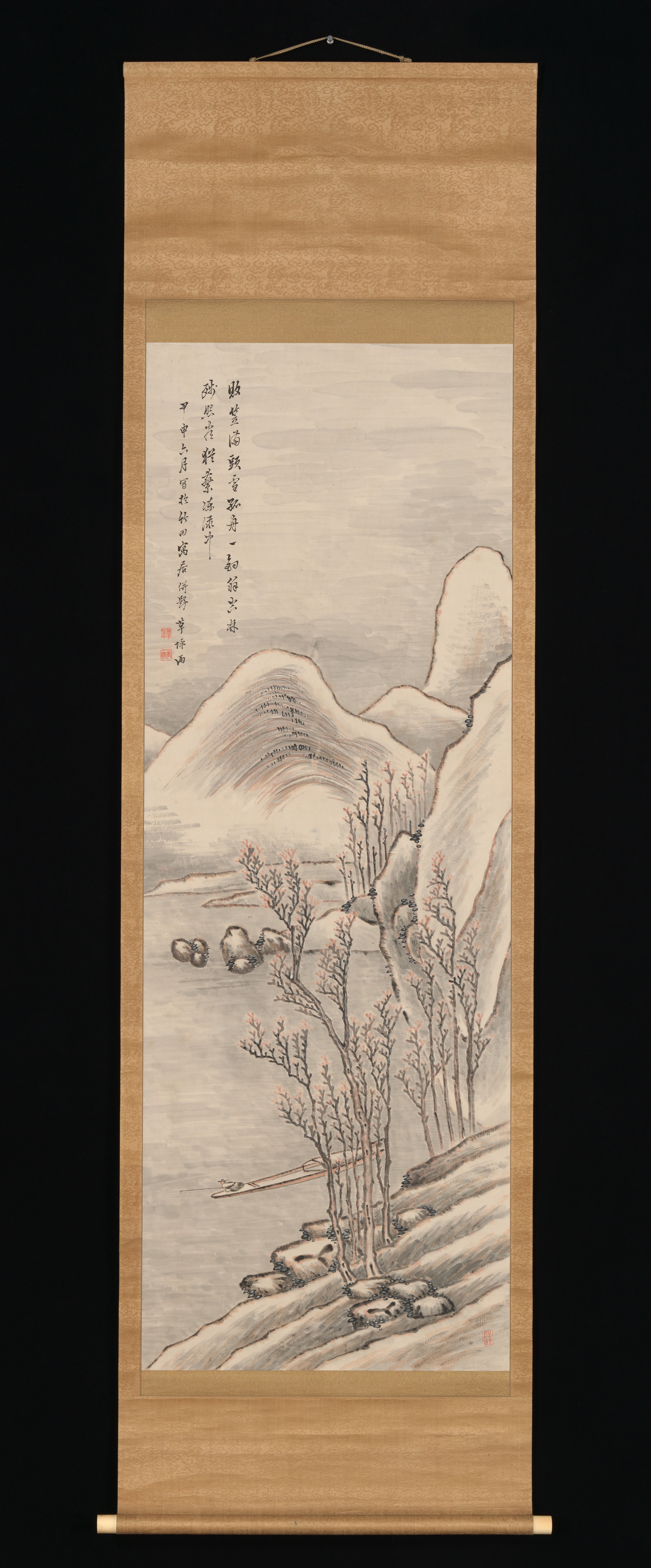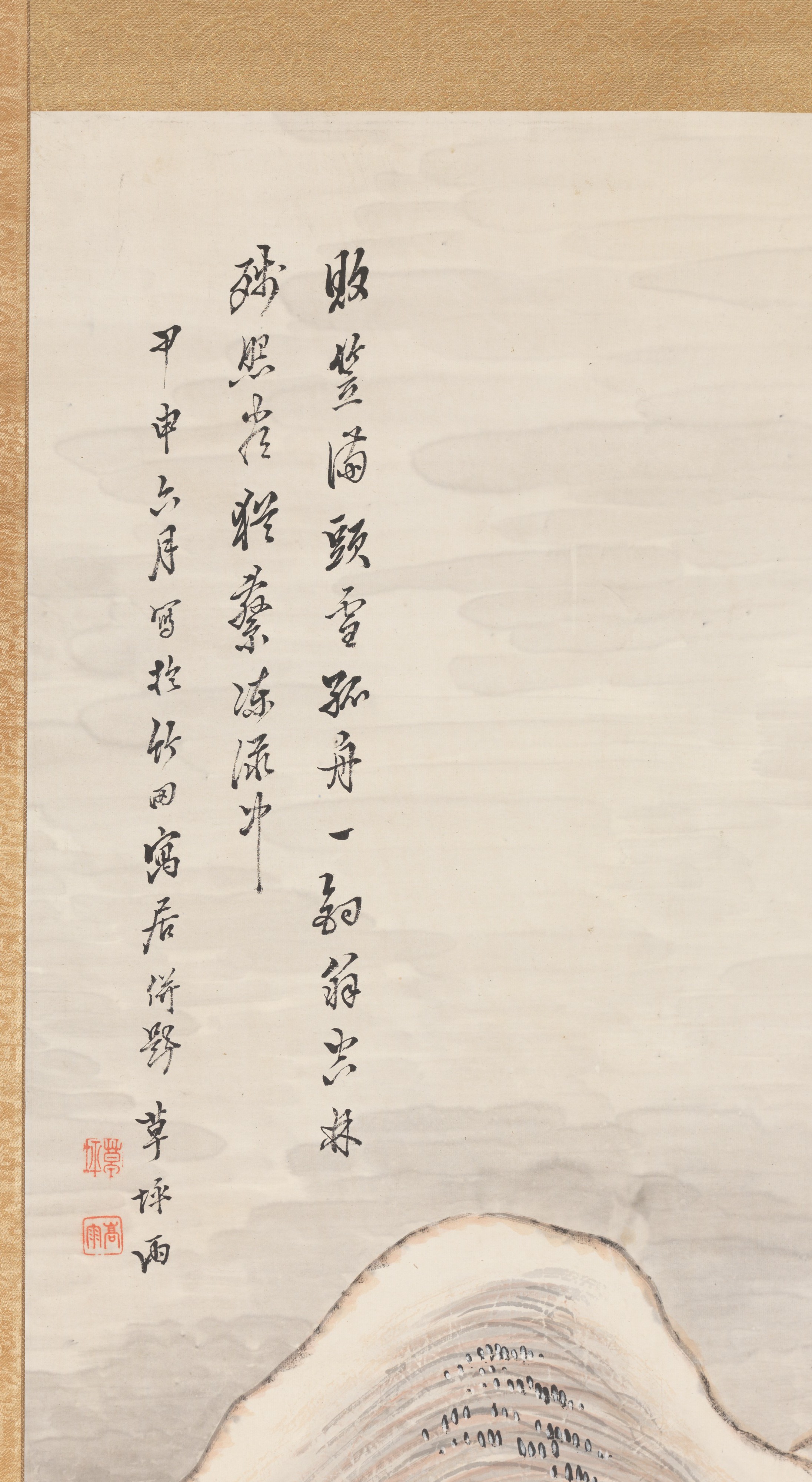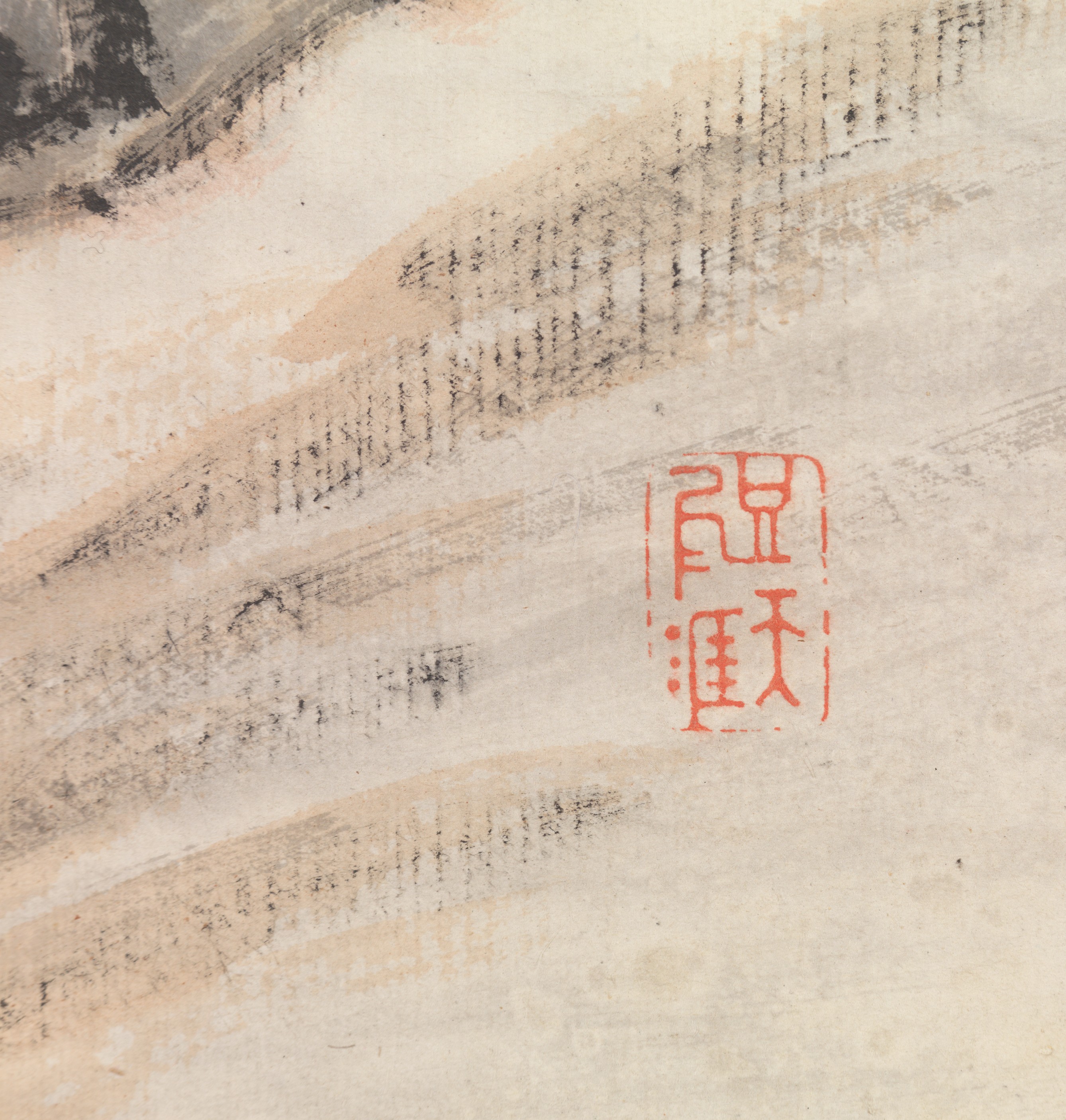Snowy Landscape
Takahashi Sōhei Japanese
Not on view
This work by the Nanga painter Takahashi Sōhei shows a solitary fisherman casting his pole near a snowy embankment lined with budding plum trees. The image is accompanied by a quatrain:
The tattered bamboo hat is all covered with snow.
In a lone boat is an old fisherman.
Gazing at the empty woods at sunset,
he seems tied down in the frozen stream.
(translated by Miyeko Murase and Shi-yee Liu)
According to Sōhei's signature, it was executed in 1824 at the residence of Tanomura Chikuden (1777–1835), a leading literati painter and fellow native of Bungo Province (modern-day Oita Prefecture) on the far western island of Kyūshū who was Sōhei's first painting teacher, making this an especially early work by the artist.
Sōhei first encountered Chikuden in 1822 when the master visited Sōhei's hometown of Kitsuki from Kyoto. Soon thereafter, Sōhei took Chikuden as a teacher and returned with him to Kyoto, where he was quickly recognized as one of Chikuden's most promising students. This work was created shortly thereafter. Active primarily in Osaka after his initial training with Chikuden and other painters in his circle, Sōhei was so highly regarded that in the Chikuden's Record of Painting Teachers and Friends of Chikuden-sō (Chikudensō shiyū garoku), he is the only of Chikuden's disciples listed alongside many senior, leading artists of the day. However, by his mid-twenties, Sōhei had contracted an illness that forced him to spend most of his time back home in Bungo. Although his age at death, thirty-two, is known, there is some confusion about the exact year. He is thought to have stayed in Bungo permanently after 1830, and rumors that he had died began circulating in 1833, but he is believed to have survived a couple more years, until around 1835.
This image cannot be enlarged, viewed at full screen, or downloaded.
This artwork is meant to be viewed from right to left. Scroll left to view more.





